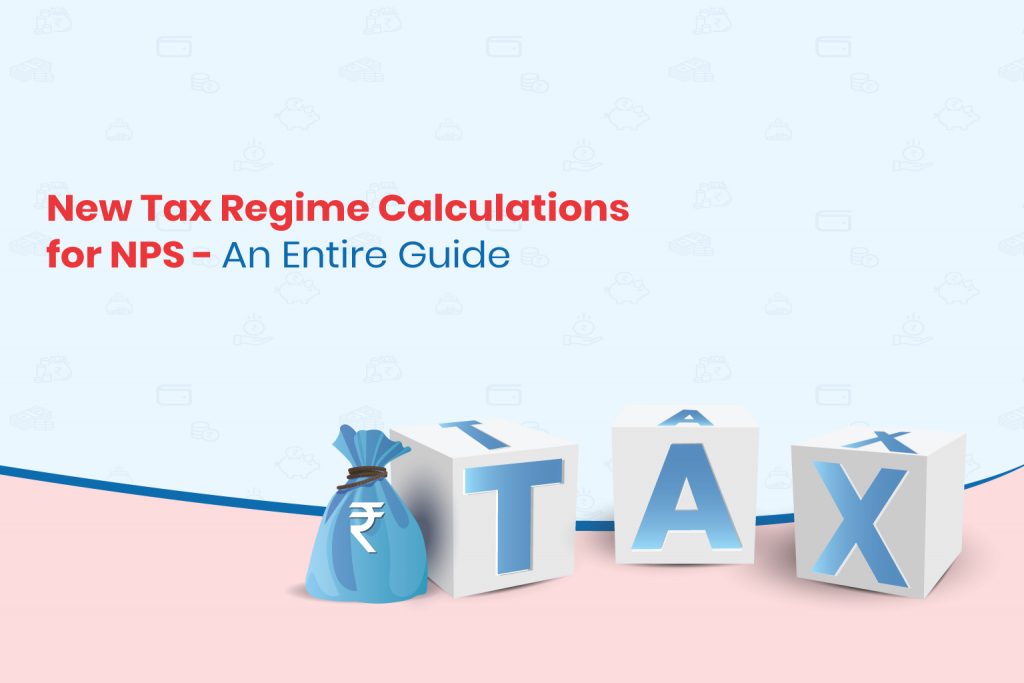The National Pension System (NPS) remains a tax-efficient retirement planning option, even under the New Tax Regime. While the old regime offered multiple deductions, the new regime simplifies taxation by lowering tax rates and limiting exemptions.
What does this mean for NPS contributors?
How much tax can you save in the new regime?
This guide will break down the tax benefits of NPS under the New Tax Regime (2023-24 & beyond) for:
- Employees contributing to NPS
- Employer’s NPS contribution
- Self-employed NPS investors
- NPS withdrawals & annuity purchases
Maximize your NPS benefits today!Open an NPS account with HDFC Pension.
- Tax Benefits for Employees on Self-Contribution
Under the Old Tax Regime, employees could claim:
✔₹1.5 lakh deduction under Section 80CCD(1) (part of 80C limit)
✔₹50,000 additional deduction under Section 80CCD(1B)
What About the New Tax Regime?
No deductions under 80CCD(1) & 80CCD(1B)
But Employer’s NPS contribution (80CCD(2)) remains tax-free!
Who should choose NPS under the New Regime?
- Those whose employers contribute to NPS
- High-income individuals benefiting from lower tax rates
Need help deciding?Calculate your NPS tax savings with HDFC Pension.
- Tax Benefits for Employees on Employer’s Contribution
Employer’s contribution to NPS is still tax-free under the New Tax Regime!
- Section 80CCD(2): Employer’s contribution (up to 10% of salary for private employees &14% for government employees) remains fully tax-exempt.
Example:
- Annual salary: ₹10,00,000
- Employer’s NPS contribution (10%): ₹1,00,000
- Taxable income reduces to ₹9,00,000!
Want tax-free employer NPS benefits?Join HDFC Pension today.
- Tax Benefits for Self-Employed Individuals
New Tax Regime: No deductions under 80CCD(1) or 80CCD(1B).
But NPS is still beneficial because of its high returns & disciplined retirement savings!
Self-employed? Secure your future with NPS through HDFC Pension.
- Tax Benefits on Partial Withdrawal from NPS Account
Did you know?
Partial withdrawals (up to 25% of self-contributed amount) are tax-free under both tax regimes!
- Eligibility: Must have invested for at least 3 years.
- Purpose: Medical emergencies, education, home purchase, etc.
Plan your withdrawals smartly!Learn more with HDFC Pension.
- Tax Benefit on Purchase of Annuity from NPS Corpus
60% of the NPS corpus can be withdrawn at retirement (tax-free in the old regime).
40% must be used to buy an annuity, which is taxable as per income slab.
New Tax Regime:
✔Tax-free withdrawal (60% corpus) remains unchanged!
✔Annuity income is taxable as per the new tax slab.
Maximize your post-retirement income!Invest with HDFC Pension.
- Tax Benefit on Lump Sum Withdrawal at Retirement
✔60% of the total NPS corpus remains tax-free under both tax regimes.
✔Only annuity income (pension) is taxable in the new regime.
Plan your retirement withdrawals smartly! Get expert advice from HDFC Pension.
- Tax Benefits for Corporates/Employers
Corporates get tax deductions on employer contributions to NPS under:
✔Section 80CCD(2) – Up to 10% of salary is deductible
✔Business expense deductions for NPS contributions
Want to offer NPS to employees? Partner with HDFC Pension for corporate NPS benefits!
Summary: Should You Invest in NPS Under the New Tax Regime?
✔Employer’s NPS contribution is still tax-free.
✔Partial withdrawals are tax-exempt.
✔60% corpus withdrawal at retirement remains tax-free.
✔No deductions for self-contributions (unlike the old regime).
Best for:
- Salaried individuals with employer NPS contributions
- Investors looking for long-term retirement security
- Corporate employers seeking tax deductions
Secure your future with NPS!Start investing with HDFC Pension today.





Leave a Reply